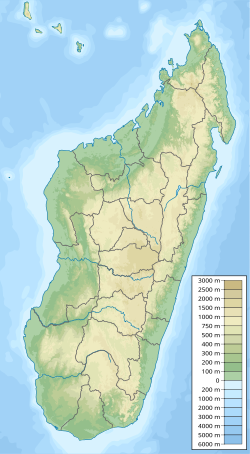| Ankarafantsika Formation | |
|---|---|
| Stratigraphic range: Cenomanian | |
| Type | Geological formation |
| Underlies | Basalt |
| Lithology | |
| Primary | Sandstone |
| Location | |
| Coordinates | 16°24′S46°54′E / 16.4°S 46.9°E |
| Approximate paleocoordinates | 37°48′S36°36′E / 37.8°S 36.6°E |
| Region | Boeny, Mahajanga Province |
| Country | Madagascar |
| Extent | Mahajanga Basin |
| Type section | |
| Named for | Ankarafantsika National Park |
Location of the formation in Madagascar | |
The Ankarafantsika Formation is a Late Cretaceous (Cenomanian) geologic formation of the Mahajanga Basin in the Boeny region of Madagascar, Africa. The fine-grained sandstones of the formation were deposited in a fluvial to lacustrine environment. [1] [2]
